
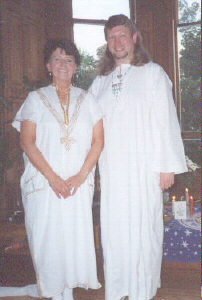

 I left Hartlepool for a remote Scottish Glen during the waxing of the July moon to take part in a ceremony as old as time: The Handfasting (or Pagan Wedding). The sun shone on the occasion as the 'stone circle' was cleared and blessed. There the couple who were betrothed shared bread and wine in the time honoured tradition after exchanging their vows, and then with hands securely bound with white ribbon 'lept the broom'.
With modern lifestyles and the disillusionment with orthodox religions, many people are turning to alternate weddings - be it a traditional style in an unusual place like the 'Wingfield Castle' moored by Hartlepool Historic Quay, which is licensed for weddings or back to the 'Handfasting Ceremony' that has survived unchanged for thousands of years. Here are some of the traditions:
First of all, the very word handfasting got it's origin in the wedding custom of tying the bride and groom's hands (actually, wrists) together. In some versions, this is only done for as long as the ceremony lasts, but in others, the cord is not untied until the marriage is physically consummated.
Another custom in Pagan ceremonies is that the couple jumps over the broom that was used to clean the Circle (even outdoors - we're talking cleaning out of all negative vibrations) together. This is still practised in common law marriages in some towns and villages.
The vow can be taken, in my tradition, for any duration of time. Many people vowed marriage for a year and a day (the traditional length of time - 13 moon cycles). If the marriage proved to last over this period of time, then the vows would be renewed for longer.
The throwing of the garter and bouquet, and the groom not being allowed to see the bride beforehand was also Pagan in origin.
The rice was thrown as an "offering" to the bride and groom, so that they may never hunger. A good symbol to use for a marriage would be any animal that mates for life - like swans.
The happy couple in this ceremony followed with a registery office ceremony a month later 'just for the legal obligations' but know in their hearts when they truly 'tied the knot' - Seth Haniel
I left Hartlepool for a remote Scottish Glen during the waxing of the July moon to take part in a ceremony as old as time: The Handfasting (or Pagan Wedding). The sun shone on the occasion as the 'stone circle' was cleared and blessed. There the couple who were betrothed shared bread and wine in the time honoured tradition after exchanging their vows, and then with hands securely bound with white ribbon 'lept the broom'.
With modern lifestyles and the disillusionment with orthodox religions, many people are turning to alternate weddings - be it a traditional style in an unusual place like the 'Wingfield Castle' moored by Hartlepool Historic Quay, which is licensed for weddings or back to the 'Handfasting Ceremony' that has survived unchanged for thousands of years. Here are some of the traditions:
First of all, the very word handfasting got it's origin in the wedding custom of tying the bride and groom's hands (actually, wrists) together. In some versions, this is only done for as long as the ceremony lasts, but in others, the cord is not untied until the marriage is physically consummated.
Another custom in Pagan ceremonies is that the couple jumps over the broom that was used to clean the Circle (even outdoors - we're talking cleaning out of all negative vibrations) together. This is still practised in common law marriages in some towns and villages.
The vow can be taken, in my tradition, for any duration of time. Many people vowed marriage for a year and a day (the traditional length of time - 13 moon cycles). If the marriage proved to last over this period of time, then the vows would be renewed for longer.
The throwing of the garter and bouquet, and the groom not being allowed to see the bride beforehand was also Pagan in origin.
The rice was thrown as an "offering" to the bride and groom, so that they may never hunger. A good symbol to use for a marriage would be any animal that mates for life - like swans.
The happy couple in this ceremony followed with a registery office ceremony a month later 'just for the legal obligations' but know in their hearts when they truly 'tied the knot' - Seth Haniel
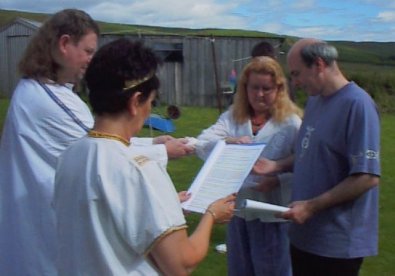
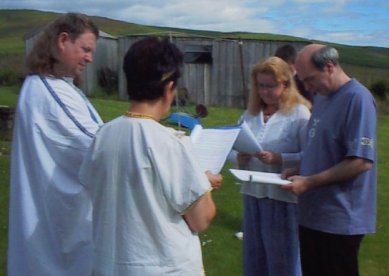

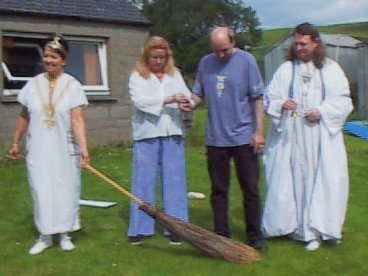
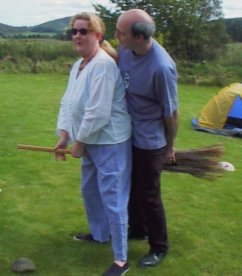
Home
|
|
|
|